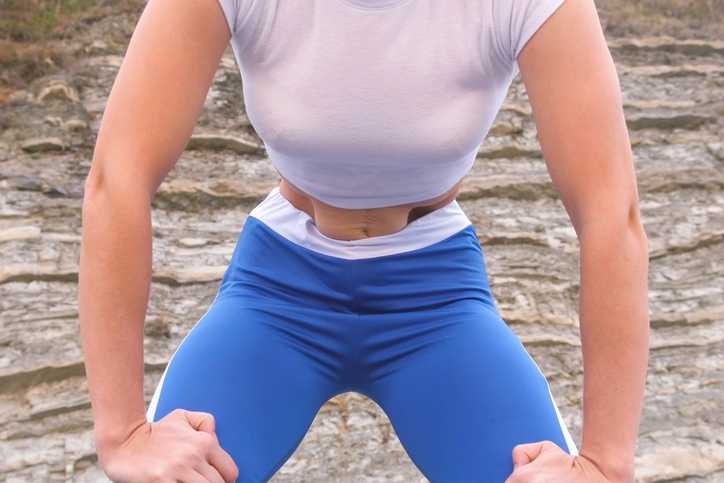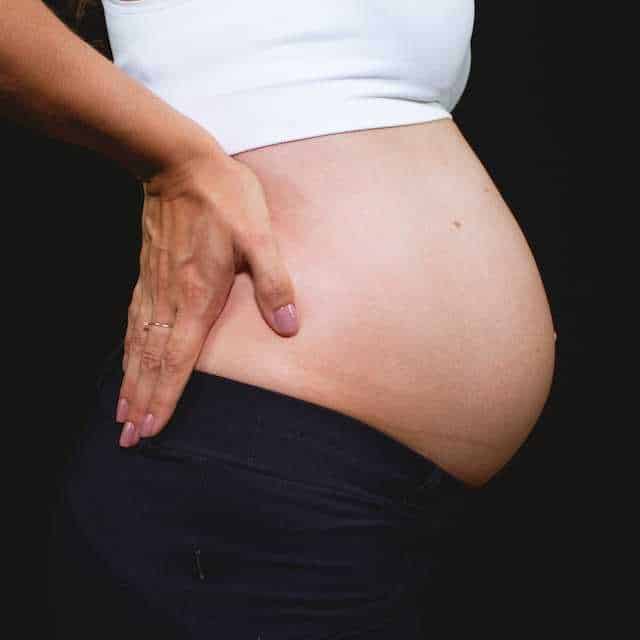El embarazo, el sobrepeso y las malas posturas son algunas situaciones que pueden desencadenar la separaciÃģn de los mÚsculos del abdomen. A esta condiciÃģn se le conoce como diÃĄstasis de rectos abdominales y no es solo un problema estÃĐtico, sino tambiÃĐn funcional. En Sculpture Clinic explicamos las soluciones quirÚrgicas y no quirÚrgicas a este problema.
Tabla de contenidos
ToggleÂŋQuÃĐ es la diÃĄstasis de rectos abdominales?
A la separaciÃģn de los mÚsculos rectos abdominales se le conoce como diÃĄstasis abdominal. Esta alteraciÃģn debilita la pared del abdomen y provoca que aparezca un bulto en esta zona cuando la persona estÃĄ de pie o realiza movimientos de prensa abdominal.
Los rectos abdominales son dos mÚsculos que se encuentran en el centro del cuerpo y estÃĄn unidos por la lÃnea alba. Su funciÃģn, junto al resto de los mÚsculos del abdomen es dar sostÃĐn al cuerpo y facilitar los movimientos. TambiÃĐn se encargan de proteger los Ãģrganos internos.
La separaciÃģn de estos mÚsculos afecta la estÃĐtica debido a que el abdomen parece mÃĄs grande. Pero este no es el Único problema, ya que puede provocar incontinencia urinaria, prolapso, dolores de espalda y en la pelvis.
Causas comunes de la diÃĄstasis de rectos abdominales
La diÃĄstasis abdominal estÃĄ relacionada con el aumento de la presiÃģn intraabdominal, lo que provoca la separaciÃģn de los mÚsculos. Esto es lo que ocurre, por ejemplo, durante el embarazo debido a que el abdomen se expande para dar espacio al feto en crecimiento.
El embarazo y el parto pueden traer cambios al cuerpo de la mujer como la diÃĄstasis abdominal y cambios en los labios vaginales. Estos Últimos se pueden corregir mediante labioplastia.
Las personas con obesidad tambiÃĐn son propensas a sufrir de diÃĄstasis de rectos.
Hay otros factores de riesgo que pueden provocar esta alteraciÃģn. Entre ellos estÃĄn el sedentarismo, la inflamaciÃģn intestinal o el exceso de ejercicio. Asimismo, puede aparecer a consecuencia de algunas cirugÃas.
IdentificaciÃģn y diagnÃģstico de la diÃĄstasis de rectos
El diagnÃģstico de la diÃĄstasis abdominal se hace mediante un examen fÃsico que puede llevar a cabo un fisioterapeuta. TambiÃĐn se solicitan ecografÃas que permiten ver si existe la separaciÃģn entre los mÚsculos y determinar con exactitud de cuÃĄntos centÃmetros es.
Una persona puede sospechar que tiene esta condiciÃģn cuando su abdomen estÃĄ flÃĄcido y abultado, y es posible hacerse una autoevaluaciÃģn.
Para ello debe acostarse boca arriba sobre una superficie sÃģlida, flexiona las rodillas para apoyar los pies en suelo y haz un abdominal. Al ejecutar este movimiento debe palpar el ÃĄrea sobre el ombligo con la yema de los dedos. Esto le permitirÃĄ saber si hay una separaciÃģn de los mÚsculos.
DespuÃĐs del autoexamen es necesario acudir al especialista para recibir un diagnÃģstico profesional y el tratamiento.
Soluciones no quirÚrgicas
Si la separaciÃģn entre los mÚsculos rectos es menor de dos centÃmetros se puede tratar con ejercicios y fisioterapia.

Ejercicios especÃficos para tratar la diÃĄstasis de rectos
El fisioterapeuta es el encargado de orientar al paciente sobre los ejercicios para el fortalecimiento del core que se deben hacer. En este caso no se realizan los abdominales tradicionales, por lo que es importante seguir las instrucciones del terapista.
Durante las terapias se realizan abdominales hipopresivos y se trabaja el mÚsculo transverso abdominal. TambiÃĐn se recomiendan ejercicios para el suelo pÃĐlvico.
No olvides que un especialista es quien te dirÃĄ cuÃĄles ejercicios de estiramiento y movilidad puedes hacer, asà como los de fortalecimiento.
Programas de fisioterapia y rehabilitaciÃģn
Como explicamos, es preciso acudir con un fisioterapista para diagnosticar y aplicar el tratamiento correspondiente. Si la diÃĄstasis de rectos es leve es posible solucionarlo mediante un programa ajustado a las condiciones del paciente.
Por otro lado, se recomienda pasar por este proceso incluso antes de acudir a la cirugÃa para corregir la diÃĄstasis.
Los resultados con estos tratamientos pueden verse en un aÃąo, incluso mÃĄs tiempo, y dependen de cada paciente. Las terapias deben acompaÃąarse con una buena alimentaciÃģn.
Uso de fajas y bandas abdominales: pros y contras
Las fajas actÚan como un complemento al tratamiento de la diÃĄstasis abdominal y ayudan a evitar las molestias. Sin embargo, por sà solas no solucionan el problema. AdemÃĄs, no se puede utilizar cualquier tipo de faja. SerÃĄ el especialista quien indicarÃĄ quÃĐ tipo de faja usar y por cuÃĄnto tiempo.
Las ventajas de las fajas son:
- Previenen los dolores de espalda.
- Evitan que los Ãģrganos se muevan de su sitio.
- Ayuda a comprimir el abdomen.
En cuanto a las desventajas:
- No se puede usar cualquier faja.
- Hay que evitar abusar de su uso.
Soluciones quirÚrgicas
Aquellos casos en los que la diÃĄstasis de rectos abdominales es grave se recurre a la cirugÃa para colocar los mÚsculos en su lugar. Se recomiendan los tratamientos quirÚrgicos cuando la separaciÃģn es mayor de tres centÃmetros y cuando no ha funcionado la fisioterapia.
Candidatos ideales para la cirugÃa de diÃĄstasis de rectos
No en todos los casos hay que hacer una cirugÃa para corregir la diÃĄstasis de rectos abdominales. La cirugÃa se aplica en casos en los que la separaciÃģn sea muy grave.
TambiÃĐn se toman en cuenta otros factores, como que el paciente sufra de dolores de espalda y otras molestias.
Hay ocasiones en las que la diÃĄstasis estÃĄ asociada con una hernia, que puede ser umbilical, inguinal o abdominal. En estos casos tambiÃĐn se recurre a la cirugÃa.
Tipos de cirugÃas para tratar la diÃĄstasis de rectos abdominales
Los tratamientos quirÚrgicos lo que buscan es reparar la lÃnea media mediante suturas. De este modo regresan los mÚsculos a su lugar.
Plicatura de rectos
La plicatura de los rectos abdominales consiste en unir los mÚsculos mediante suturas. Esta se hace a travÃĐs de una incisiÃģn que se hace cerca del ombligo. De acuerdo a las condiciones del paciente se puede utilizar o no una malla que ayuda a fortalecer el ÃĄrea.
TambiÃĐn se puede hacer mediante una endoscopia, que es una cirugÃa menos invasiva.
Abdominoplastia
La diÃĄstasis de rectos abdominales tambiÃĐn se corrige mediante una abdominoplastia cuando el paciente tiene exceso de piel en el abdomen.
Esta cirugÃa se hace con una incisiÃģn en la parte baja del abdomen, mediante la cual el cirujano tiene acceso a los mÚsculos. Se encargarÃĄ de llevar ambos mÚsculos a su lugar y hacer la plicatura. De igual forma, puede colocar o no una malla.
DespuÃĐs de unir los mÚsculos procede a estirar la piel y cortar el exceso. Al hacer la abdominoplastia tambiÃĐn se reposiciona el ombligo.
Consulta el tratamiento de abdominoplastia de Sculpture Clinic si crees que esta es la soluciÃģn para tu problema.
Es posible combinar la abdominoplastia con una liposucciÃģn para eliminar grasa y mejorar el contorno corporal.
Riesgos y complicaciones de las cirugÃas para diÃĄstasis de rectos
Toda operaciÃģn tiene riesgos y la cirugÃa para corregir la diÃĄstasis de rectos no es la excepciÃģn. Estos incluyen apariciÃģn de hematomas, seromas, infecciones, dolor o problemas relacionados con la anestesia.
Elegir el cirujano adecuado y seguir las instrucciones que se den antes y despuÃĐs de la operaciÃģn ayuda a reducir los riesgos.
RecuperaciÃģn postoperatoria: consejos y cuidados
Durante la recuperaciÃģn el paciente debe seguir las instrucciones del cirujano al pie de la letra. El postoperatorio puede durar cuatro semanas en las que el paciente debe guardar reposo fÃsico. Este tiempo serÃĄ para que la piel y los mÚsculos se acoplen.
La primera semana deberÃĄ tomar los medicamentos que le indique el mÃĐdico para evitar infecciones y controlar las molestias. Es probable que sienta algo de dolor.
Debe dormir boca arriba, con la espalda levantada para evitar estirar el abdomen por completo.
El paciente volverÃĄ a sus actividades poco a poco, pero no debe hacer grandes esfuerzos fÃsicos.
Tras la operaciÃģn deberÃĄ llevar una faja para diastasis abdominal. Al principio todo el dÃa, y luego segÚn lo indique el cirujano.
Resultados a largo plazo de las soluciones quirÚrgicas y no quirÚrgicas
Corregir la diÃĄstasis de rectos resultarÃĄ en una mejor apariencia para el paciente. El contorno corporal mejorarÃĄ, ya que se vuelven a unir los mÚsculos y se fortalecen. Lo que tambiÃĐn resultarÃĄ en una mejor autoestima.
Si la correcciÃģn se hace mediante abdominoplastia tambiÃĐn se eliminarÃĄ el exceso de piel, lo que significa un cambio profundo en la imagen del paciente.
Pero la diÃĄstasis de rectos no es solo un problema estÃĐtico, sino funcional. De modo que, despuÃĐs de la cirugÃa, se espera que desaparezcan las molestias, el dolor de espalda, la incontinencia y demÃĄs sÃntomas que haya tenido el paciente.

PrevenciÃģn de la diÃĄstasis de rectos abdominales
- Haz ejercicios para fortalecer el mÚsculo transverso abdominal.
- MantÃĐn siempre una buena postura mientras estÃĐs de pie o sentado.
- Cuando estÃĐs sentado puedes colocar una almohada en la espalda para mejorar la posiciÃģn.
- Evita el sedentarismo y haz ejercicios; sin embargo, la actividad fÃsica debe ser controlada.
- No cargues pesos ni objetos muy pesados, sobre todo durante el embarazo.
Conclusiones: escoger la soluciÃģn adecuada para cada caso
La diÃĄstasis abdominal puede tener origen por diferentes motivos y distintos grados de gravedad. Es una condiciÃģn que debe ser diagnosticada y tratada por un especialista.
De acuerdo a la situaciÃģn del paciente se determinarÃĄ si se puede solucionar mediante tratamientos quirÚrgicos, como la abdominoplastia, o por terapias fisioterapeutas. Escucha al especialista y sigue sus indicaciones.
Si sospechas que sufres de diÃĄstasis de rectos abdominales acude a una revisiÃģn para iniciar el tratamiento lo antes posible.









